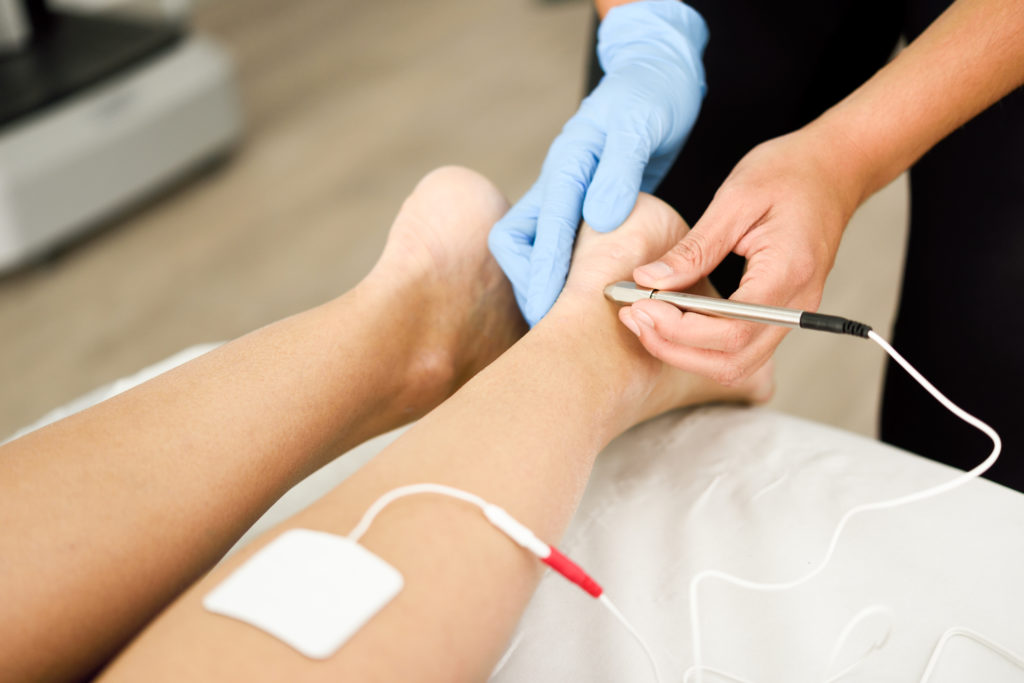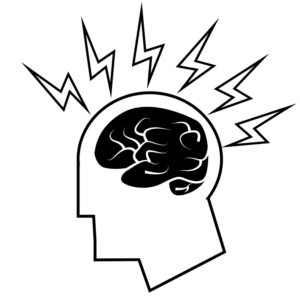If you’re dealing with nerve pain, you’re likely used to pain without a specific explanation or solution. This can be very alienating, but keep in mind: approximately 40 million Americans are dealing with the same issue. Nerve pain can be caused by cancer, HIV, diabetes, shingles, trauma, toxins, vitamin deficiencies, Lyme disease, and much more. Some people are able to trace the causes of their nerve pain, and others remain at least partially in the dark.
Fortunately, no matter the causes of your nerve pain, there are strategies and practices you can make part of a daily routine to deal with it. Nerve pain can range from an annoyance to debilitating. However, when it comes to functionality, there’s always room for improvement. If you’re committed to mitigating your nerve pain, congratulations. You’ve come to the right place. Here we’ll explore five techniques to help you cope with nerve pain, no matter who you are. Remember, things can always be worse, and they can absolutely always be better.
Obviously there are many cases of nerve pain that require surgery, prescription drugs, and other medical interventions. Always consult your doctor and center medical treatment in your recovery or maintenance regimen. However, if you want to work on nerve pain on your own, we’re here to help.
By incorporating these techniques into your everyday life (or as much as possible) you can live a fuller life. It’s not easy, but it’s so much better than giving in. Let’s explore:
1) Exercise and Stretching

If you have sciatica or neuropathy (which millions of Americans deal with), this will be especially important. However, no matter who you are you can mitigate pain through working out and stretching. If your nerve pain is debilitating, you won’t want to lift heavy weights. You might not be able to exert yourself too much at all. That’s OK. Whatever small steps you can take and make routine that can help you feel better: do them. Find a regimen you can commit to daily and do it.
Nerve pain is often a mixture of physical and psychological factors. There are things you can do to treat both, but no matter the causes of your pain, exercise and stretching can make a real difference. You know where you feel the most pain. Generally there are problem areas of the body that you’re dealing with. Focus on those, and do low impact stretches and exercises that target where you’re feeling the most pain. For example, let’s say you have nerve pain in your lower back and hips. You’ll want to incorporate exercises and stretches like:
- Sitting spinal stretch
- Sitting pigeon pose
- Reclining pigeon pose
- Knee to opposite shoulder
- Standing hamstring stretch
- Among others
Whatever your problem area(s) are, you can find basic stretches and exercises to help alleviate pain. Always work with a physical therapist whenever possible to build a larger repertoire of stretches and exercises.
2) Support Groups

As we mentioned in the intro, if you’re dealing with nerve pain, you’re not alone. This isolating condition can make it feel otherwise, but you’re likely a short trip away from a group that will welcome you and help you deal with your pain in many ways.
A great resource is this website run by the U.S. Pain Foundation. Each group is led by someone who has been trained by a qualified social worker to make sure they’re adding value to those who participate.
If you can’t find an in-person meeting, there’s also groups you can call into, along with online support groups that you can find at the link above. In any of these groups, you’ll likely find a welcoming group that will:
- Validate your feelings
- Share strategies to deal with pain or heal it
- Help you find the words to explain what you’re going through to others
- Listen to your pain and struggles
- Help you find better medical treatment through recommendations
- Empower and fulfill you through your ability to give these gifts to others
3) Changing Your Diet

Nerve pain, and physical pain in general, can be at least partially a function of weight. The more you weigh, the more stress you’re putting on your body, whether you’re moving or stationary. That’s why changing your diet can have a big impact on your pain.
A 2015 study on obesity and pain found that compared to people in a normal weight range for their height, overweight people reported 20% higher rates of recurrent pain. The reported recurring pain rates then went up to 68% for people with class I obesity, 136% for class II obesity, and 254% for morbid obesity.
Another major area that causes nerve pain, and chronic pain more generally is inflammation. Diets that are high in fat and processed meat create higher levels of inflammation, which often lead to chronic pain. Conversely, diets that are plant-based are high in fiber, which decreases inflammation, pain, and swelling. Plant-based diets also promote healthy gut bacteria, and there has been evidence that there are links between the gut and chronic pain.
Remember, plant-based doesn’t mean you never eat meat. But replacing some of the fat and meat you consume with plant or organic-based carbohydrates and proteins can lower your weight, curb inflammation, and lead to less pain.
WebMD has a helpful primer on eating to ease pain.
4) Massage, Oils, Creams, and Acupuncture

Massages feel amazing, and they can be useful in stimulating blood flow, and help relieve tightness in areas effected by nerve pain. Some studies have found applying botanical oils like geranium oil can reduce nerve pain. Other oils, like lavender oil, can help you relax, which can lead to better acceptance and less stress over nerve pain.
Some people might even opt for rubbing Capsaicin cream on problem areas. Made from hot chili peppers, it can be too much for the uninitiated (or in general for some). However, those who stick with it find it burns less over time, and have reported improvements in their nerve pain.
Acupuncture has been shown to stimulate blood flow. A lot of nerve pain is caused by poor circulation, or blood collecting in certain parts of the body. Acupuncture also releases endorphins, which are naturally-occurring painkillers within you. There is less research into the results from acupuncture on nerve pain than some of the other techniques, but what research has been done does show some promise.
5) Meditation

Meditation, or any mindfulness practice helps you deal with the present moment and accept it, no matter how difficult it is. A BYU study found that meditation is more effective than pharmaceutical drugs when it comes to treating neuropathic pain (a common form of nerve pain). Patients have less unwanted side effects, and more success dealing with the causes of mysterious, complicated pain that has no clear source.
If you’re dealing with pain, you might not want to increase other symptoms like dizziness, tiredness, inflammation, nausea, among others. There’s also the factor of tolerance to consider: over time drugs that treat pain have less and less impact. Meditation on the other hand seems to be more useful the more you practice it.
Of course you should consult your doctor and follow medical advice. But if you’ve been using pharmaceutical interventions to deal with nerve pain, you might consider putting more effort towards meditation or mindfulness. Yoga is another great way to combine the effects of mindfulness with the practical impact of exercise.
Meditation will help you deal with the awareness of pain without letting your reaction to it overpower you. Over time you’ll find it can improve your life in innumerable ways. Our forefathers looked for final frontiers in the world outside of them. With meditation you can explore endlessly within, while reaping countless benefits, including pain management.

